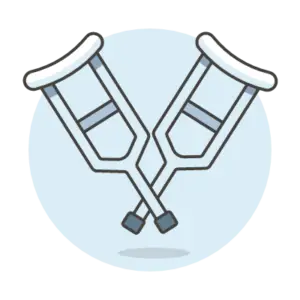Maintain Your Bone Health – Prevent Osteoporosis
Why is bone health important?
Our bones provide the framework for our body, protect vital organs, and enable movement. They support us throughout our life. However, as we age or due to certain medical conditions, bone mass, bone structure, and bone strength can decline. This can lead to osteoporosis, a condition that increases the risk of fractures. Early prevention and targeted measures can help maintain bone health and reduce fracture risk.
What is Osteoporosis?
Osteoporosis is a condition where bones lose density and structure, becoming fragile and more prone to fractures – even from minor falls or everyday movements. Since osteoporosis progresses silently, it is often called ‘the silent thief’ and diagnosed only after a fracture has occurred. Postmenopausal women are particularly at risk due to declining estrogen levels, which accelerate bone loss. However, men can also develop osteoporosis, often due to secondary causes. It is a common disease: One in three women and one in five men over 50 will suffer an osteoporotic fracture in their lifetime.
Possible consequences of osteoporosis:

Increased risk of fractures, especially in the hip, spine, wrist (radius fracture), and upper arm (humerus fracture)
Pain and reduced mobility
Postural changes, such as a rounded back
Decreased quality of life and loss of independence


Need for long-term care and higher mortality risk
Osteoporosis is preventable – early prevention is key
Early diagnosis and, if necessary, treatment can reduce fracture risk, help maintain mobility and quality of life, and lower healthcare costs. However, many people are unaware of their risk. That’s why early screening is essential to detect osteoporosis in time and to begin preventive measures – whether lifestyle changes or medical treatment –to reduce the risk of fractures.
Many people also believe that bone loss and fractures are an inevitable part of aging. But that’s not true! You can take steps yourself to significantly reduce your risk:
- Balanced nutrition: Calcium and vitamin D are essential for strong bones, along with sufficient protein.
-
- Regular exercise: Strength and balance training help maintain bone density, strengthen muscles, and reduce the risk of falls.
-
- Avoid risk factors: Smoking and excessive alcohol consumption accelerate bone loss.
- Routine bone check-ups: Early diagnosis improves the chances of effective treatment.

Take care of your bones!

Osteoporotic fractures can often be prevented. Early prevention, a bone-healthy lifestyle, and targeted medical measures can help maintain bone strength and minimize fracture risk.
Talk to your doctor and learn more about prevention options.
Helpful links:
Here we compiled for you a small selection of interesting resources.
- Royal Osteoporosis Society: Expect here information about the disease, facts, patients’ stories and bone strengthening exercise programs. https://theros.org.uk/
- International Osteoporosis Foundation for patients: This site offers information about support groups, nutrition information and many more. https://www.osteoporosis.foundation/patients
- Tips for living with osteoporosis can also be found on National Health Service and the BHOF. https://www.bonehealthandosteoporosis.org/patients/
Are you a healthcare professional looking for detailed information and updates?
- Here you might find the resources you are looking for, including webinars and updates about Osteoporosis from all around the world. https://www.osteoporosis.foundation/health-professionals
- The Bone Health and Osteoporosis foundation offers also extensive knowledge and insights. https://www.bonesource.org/
- The ASBMR Education Resource Center is a also a good go-to resource for scientists and clinicians from around the world — highlighting the latest basic, clinical and translational research in bone, mineral and musculoskeletal science with e.g. E-Learning and an education calendar. https://www.asbmr.org/education-resources/education-resource-center
Let us all join the call of the community:
No More Broken Bones. No More Broken Lives.
Disclaimer: We are not responsible for the content of external links.